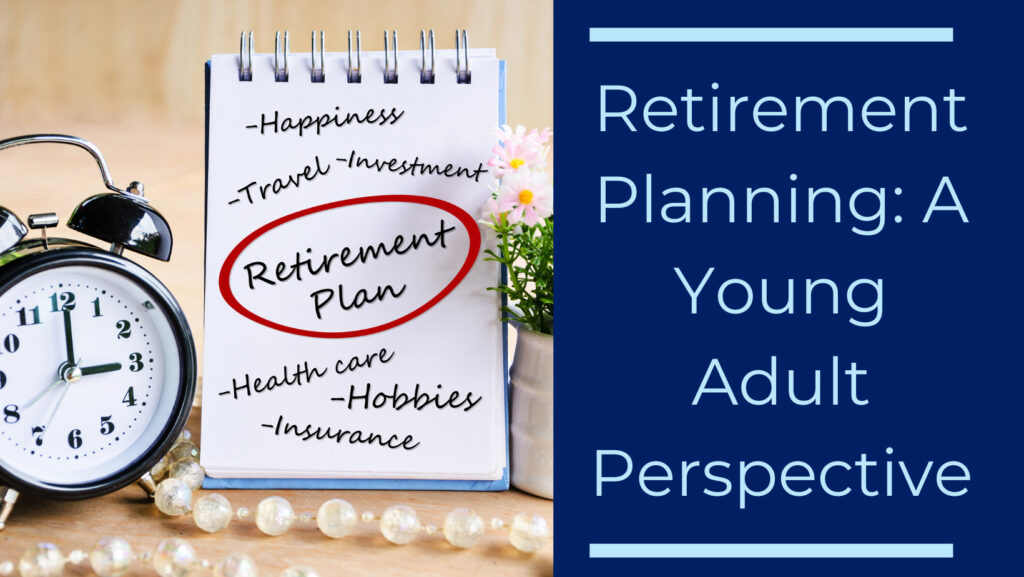
Planning how our lives will look in 50 or 60 years can sometimes feel like an exercise in futility. How is it even possible to know what day to day life will look like, or what will be important so far in the future? When we are young, the answers to these questions matter less than the understanding of financial theory surrounding the period of time between youth and retirement. With knowledge comes empowerment to take control of one’s financial destiny. Here are some of the top pieces of knowledge that all young adults need to know about getting started on their road to retirement and financial freedom.
Emotionally speaking, it doesn’t feel very good to sacrifice the pleasures of today in favour of a theoretical lifestyle 45 years away. As a result, a lot of people come up with excuses for their decision to defer the commencement of building wealth for retirement. This decision comes with an immense consequence that is not widely understood by people. The lost opportunity is called compounding, which is the concept that growth in value compounds on itself over time and accelerates the longer money is deployed. As an example, if an 18-year-old puts $1,500 per year into a passive exchange traded fund that earns 10% per year and doesn’t raise his contributions at all over his life, he will retire at 65 with $1.4 million. If that same person waits until they are 30 to begin saving the $1,500 per year, they will only retire at 65 with $447,000. The first 12 years account for $1 million of wealth at 65.
2. Figure out what your end game looks like, and do the math
Most people take the approach of saving a certain percentage of their income, investing it and hoping for the best, effectively hoping that they have enough when they retire. A better way to plan would be to make a detailed budget of your retirement lifestyle in today’s dollars, apply an inflation factor to how those costs will increase and come up with an actual number on how much you’ll need when you retire. While the number will likely seem daunting, it will motivate you to be more aggressive with your investment philosophy now such that you give yourself the best chance at meeting your goals.
3. Stuff will cost more down the road than it does now, potentially dramatically.
A lot of people think in today’s dollars, and that’s understandable. It’s easy to get our head around what simple everyday costs like grocery bills are today, so our brain assumes that there won’t be a significant change down the road. On the contrary, prices inflate over time and always have. Therefore, when we think about how much money we will need to enjoy our retirement lifestyle, we need to incorporate an assumption around inflation. As an example, if in today’s dollars, you believe you can have a comfortable retirement lifestyle with $60,000 per year and you are 25 years old, when you retire at 65 and assuming a 3% per year inflation rate, it will take $196,000 per year to pay for the same amount of goods and services that cost $60,000 today.
4. Tax Efficiency is a significant tool to utilize on the path to wealth
In Canada, there are some significant tax advantages offered that most people under utilize. The first, most obvious one for retirement savings is the Registered Retirement Savings Plan (RRSP). This is an investment account, not an investment. It is an account whereby Canadians can put money in on a pre-tax basis, and then no tax is applied to the investments’ gains until they are withdrawn in retirement. This ability to defer taxes on each transaction that you make between youth and retirement is a big help in keeping your capital whole to compound on itself. The second is the Tax-Free Savings Account (TFSA), another account but the opposite of the RRSP in that contributions go into the account after you have paid tax on the income you generated that gave you the cash to invest. Once the cash is in the account, it is never taxed again. Both the RRSP and the TFSA allow Canadians to invest in a broad spectrum of investment products like ETFs, Mutual Funds, Stocks, Bonds and REITs. Maximizing these accounts can really do wonders to accelerate retirement savings.
5. Owning a home in Canada is usually a sure-fire way to build long term wealth
With more nomadic lifestyles in today’s world, owning a home doesn’t always make perfect financial sense. Transacting real estate comes with hefty costs like realtor commissions and property transfer taxes and therefore renting can make more sense if you plan to move around often. However for those who stay in the same place for 7 or more years at a time, owning a home has proven to be a time tested way to build wealth in Canada. Buying a home is an excellent way to force wealth creation because most people get a mortgage which requires regular payments to reduce the debt owing to the bank. Over long periods of time, equity builds in the house. On top of debt reduction, owning a home also comes with a huge tax advantage, the Primary Residence Exemption (PRE). The PRE is a tax rule whereby Canadians never pay any tax on the sale of their primary home. For a highly leveraged investment – this program’s value can’t be understated.
For those with higher risk tolerance, consider a re-advanceable home equity line of credit whereby new borrowing room becomes available as principal payments are made on your mortgage. This will allow you to deploy some of the equity in your home to other investments so you don’t end up with all your eggs in one basket given how high house prices are today.
Written by Doug Allan - Author of "A Fighting Chance"